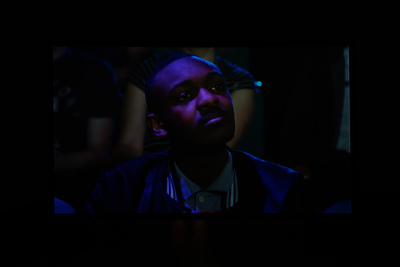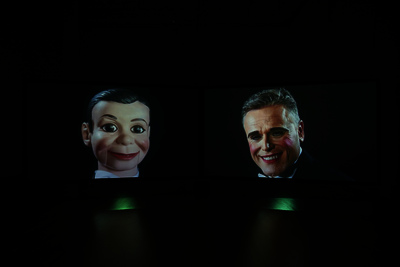Campbell, David, Durden, Mark and Brown, Ian (2016) Common Culture Cabaret. [Show/Exhibition]
![[img]](/28011/1.hassmallThumbnailVersion/MAC%20Common%20Culture%20and%20Bert%20Hackett%20067.jpg)
|
Image (Installation shot of 'Vent')
MAC Common Culture and Bert Hackett 067.jpg - Submitted Version Download (1MB) | Preview |
|
![[img]](/28011/2.hassmallThumbnailVersion/MAC%20Common%20Culture%20and%20Bert%20Hackett%20057.jpg)
|
Image (Installation shot of 'Vent')
MAC Common Culture and Bert Hackett 057.jpg Download (1MB) | Preview |
|
![[img]](/28011/3.hassmallThumbnailVersion/MAC%20Common%20Culture%20and%20Bert%20Hackett%20045.jpg)
|
Image (Installation shot of 'Vent')
MAC Common Culture and Bert Hackett 045.jpg Download (1MB) | Preview |
|
![[img]](/28011/4.hassmallThumbnailVersion/MAC%20Common%20Culture%20and%20Bert%20Hackett%20035.jpg)
|
Image (Installation shot of 'Vent')
MAC Common Culture and Bert Hackett 035.jpg Download (1MB) | Preview |
Abstract
Vent is a three-screen video installation commissioned by mac, Birmingham, for the solo exhibition Common Culture Cabaret (2016). Vent is formed around an investigation into the wider contexts of ventriloquism, from the disassociated voice, the political associations of throwing voices and the mania of binary extremes within the psychological conditions of late capitalism (Connor, 2000, Fisher, 2009). The use of the ventriloquist act creates a mechanism to reveal and critique the processes by which affective power is deployed to induce emotional attachment between audiences and celebrities. The dialogue, appropriated from UK and US celebrity confession television programmes, makes apparent the interchangeability of the both the content of the narrative and process by which it is translated into entertainment. To further extend the enquiry into throwing voices (as a political act), an impressionist cycles through a series of celebrity voices. The impressions, dissociated from the content of the material, explore self-commodification as a mechanism to exchange apparent personal distress for economic benefit. The three elements: ventriloquist, dummy and audience, are depicted within the same space, and the scale and orientation of the video projections provide a restructured version of the televisual convention. Significantly, the act itself is displaced; the dummy and ventriloquist are separated and presented on separate screens, and though located in the conventional viewing position, the audience’s response is depicted as mechanistic and out of sync with the act. As the gallery audience inhabit a space centrally between the three screens, they are encouraged to occupy a distinctly different role to that of their televised equivalent. The methodology of dissemination is pivotal to the research, allowing for the deconstruction and subsequent reconstruction of the components to form an unsettling experience. As such, the alienating process of the cycle of repetitive mass consumption is exposed and made available for critique.
| Item Type: | Show/Exhibition |
|---|---|
| Subjects: | W100 Fine Art |
| Department: | Faculties > Arts, Design and Social Sciences > Arts |
| Depositing User: | David Campbell |
| Date Deposited: | 18 Oct 2016 08:54 |
| Last Modified: | 04 Jul 2019 13:15 |
| URI: | http://nrl.northumbria.ac.uk/id/eprint/28011 |
Downloads
Downloads per month over past year










